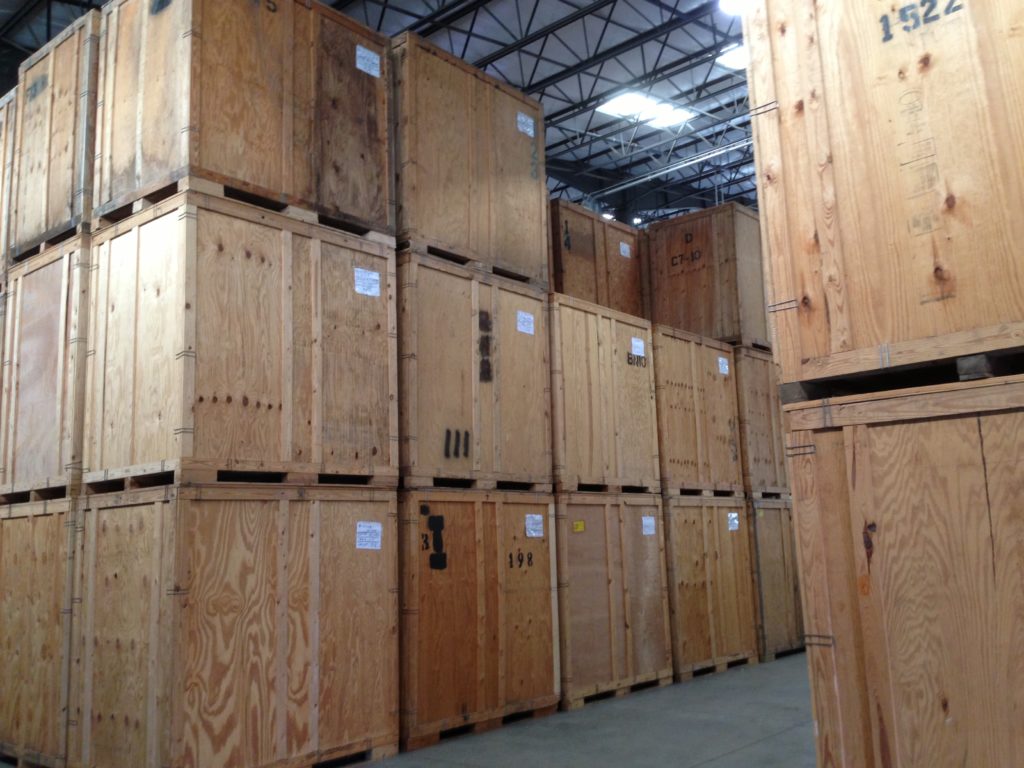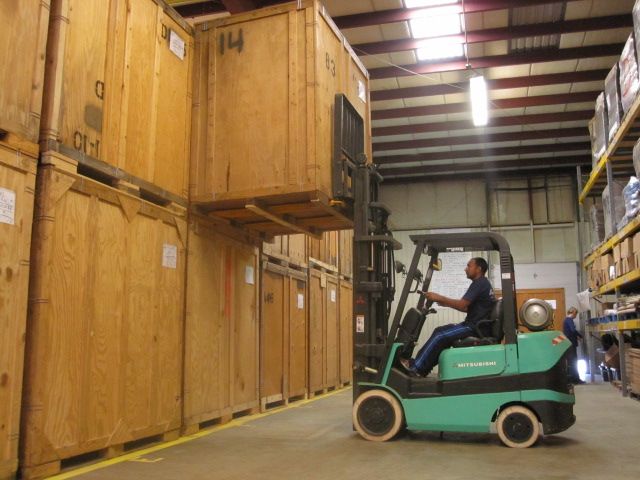The Impact of Temperature & Humidity on Long-Term Storage
Whether it’s seasonal belongings, collectibles, investment pieces, or furniture from downsizing your home, there are many reasons to store your possessions that you want to keep safe, organized, and well-preserved.
However, when storing items long-term, high temperatures and humidity can pose a threat to delicate belongings, leading to degradation, mold growth, and damage. This often-neglected aspect of long-term storage results in discarded heirlooms, documents, and other sentimental and valuable possessions.
Understanding Temperature’s Role in Long-Term Storage
Storage facilities without climate regulations can expose your items to the blistering cold and scorching heat, not to mention extremely dry and humid air. Sensitive storage items can become cracked, warped, or simply decay.
Hot temperatures impact stored items in these ways:
- Warping & distortion: Wood, plastic, and certain metals can become at risk of distortion and warping. This is particularly true for instruments and wooden furniture.
- Electronic damage: A heated storage space can impact the function of electronic components exposed to prolonged elevated temperatures.
- Mold & mildew growth: High heat and humidity contribute to mold growth and mildew on items like clothing, leather, books and paper.
Cold temperatures impact stored items in these ways:
- Brittleness: Materials such as plastics and rubber can become brittle during cold temperatures, impacting items like toys and tools.
- Metal contraction: Cold temperatures can cause metals to contract, affecting the structural integrity of items like tools, machinery, or metal furniture.
The Significance of Humidity Control When Storing Items
Humidity levels play a crucial role in determining the condition of items stored in a facility. When humidity is too high, it creates a breeding ground for mold and mildew, posing a threat to various belongings.
Furniture, clothing, and important documents are particularly susceptible to mold growth, leading to damage and potential health hazards. On the other hand, excessively low humidity can result in the drying out and cracking of items such as wood furniture, musical instruments, and leather goods.
Climate-controlled storage facilities maintain optimal humidity levels, ensuring a balanced environment that protects your stored items from the harmful consequences of both high and low humidity.
Choosing a Climate-Controlled Storage Facility
When it comes to protecting your stored items, choosing a climate-controlled storage facility makes the greatest impact on the preservation of your possessions. There’s no denying that temperature changes can lead to damage.
A climate-controlled storage facility provides a consistent environment, protecting your belongings from extreme heat and cold.
Benefits of a climate-controlled storage facility include:
- Temperature stability: Protects items from extreme temperature fluctuations, preventing warping and cracking.
- Humidity control: Maintains optimal humidity levels, reducing the risk of mold and mildew growth on belongings like clothing and documents.
- Pest deterrence: The controlled environment helps deter pests that thrive in extreme conditions.
- Preservation of items: Enhances the longevity of stored possessions, ensuring they remain in excellent condition over time.
- Protection for specific items: Ideal for safeguarding sensitive items such as wooden furniture, musical instruments, electronics, and upholstered furniture.
By controlling the humidity and temperature of stored items, you can prevent the effects of temperature fluctuations on materials and ensure the long-term protection of your belongings.
Tips for Long-Term Storage
There’s more to storing your items than simply bagging or boxing them. Long-term storage requires proper preparation.
Here are a few crucial tips for preparing your items for the extended duration:
- Clean & dry items: By cleaning and thoroughly drying items, you can reduce the risk of mold and mildew growth. This applies to large home appliances like fridges, ovens, and dishwashers and small items like blankets, clothing, and other fabric items.
- Invest in quality packing materials: Avoid plastic bags and use high-quality boxes, bubble wraps, packing paper, furniture covers, vacuum-sealed bags, and other reliable packing materials that help properly store items. Consider using desiccant packets or moisture-absorbing products within sealed containers to maintain optimal humidity levels.
- Use pallets or shelves: Elevating items off the floor can help prevent water damage and allow air circulation. Pallets are a relatively cheap solution that can help.
- Regularly check on items: Schedule periodic visits to check on your storage unit to inspect your items and identify any issues.
Georgetown Moving & Storage Is a Full-Service Storage Company
Storage with Georgetown is easy. Here’s how it works:
For top-rated climate-controlled storage solutions, call (703) 889-8899 to get started.












